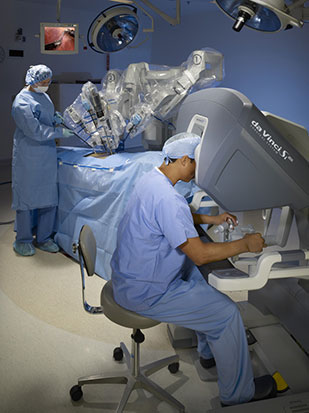Urologic Reconstructive Surgery
The kidneys produce urine that flows into the main funnel of the kidney (the renal pelvis), down the ureters, into the bladder and out through the urethra.
Any disease that results in blockage of urine flow can lead to major health issues including renal failure and infection. Urologic reconstructive surgery involves surgery of the kidney, ureter or bladder to restore normal flow of urine.
Blockage of urine flow through the ureters can be due to several causes. The most common is due to stone disease. Stones that are left untreated can lodge in the ureter and cause scarring and blockage. Also, stone treatment itself can lead to scarring of the ureter. In other cases, blockage of the ureter is due to an abnormality termed “ureteropelvic junction obstruction.” This results from abnormal ureter formation during fetal development.
Older men with chronic bladder outlet obstruction due to enlarged prostate can develop a bladder diverticulum. This results when a hernia forms in the bladder wall due to prolonged elevated bladder pressurization. Urine tends to collect within the diverticulum and can result in pain and recurrent infections. Bladder cancers also occur at a higher rate within these diverticuli. Treatment involves a procedure to open a channel in the prostate (a TURP procedure) follow by robotic diverticulectomy which removes the diverticulum and reconstructs the bladder.
In most cases reconstructive surgery can be conducted using a robotic approach. This allows for complex reconstructive cases to be done through small “keyhole” incisions as opposed to a large flank or midline incision. Use of robotic technique allows for decreased pain, improved cosmetic effects, and faster recovery. Dr. Simmons has extensive experience with both open and robotic reconstructive surgeries including robotic ureteral reconstruction, dismembered pyeloplasty, ileal ureter formation, ureteral reimplant, robotic Boari flap reimplants and bladder diverticulectomy.
